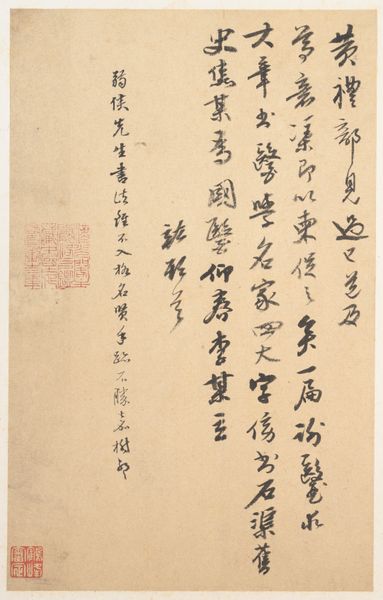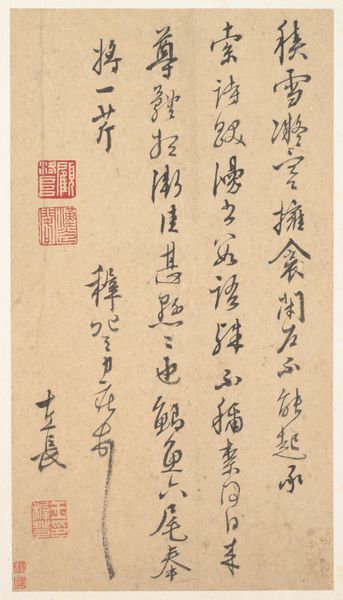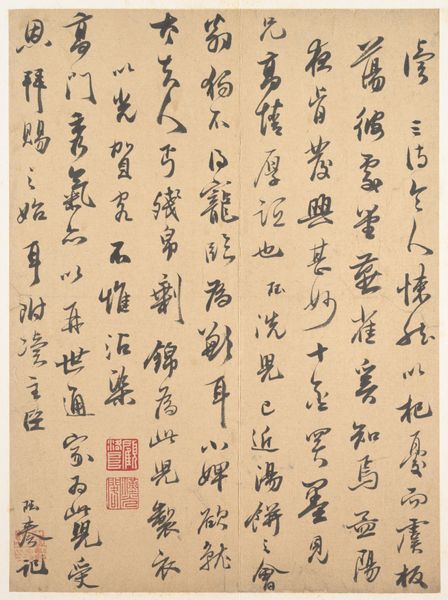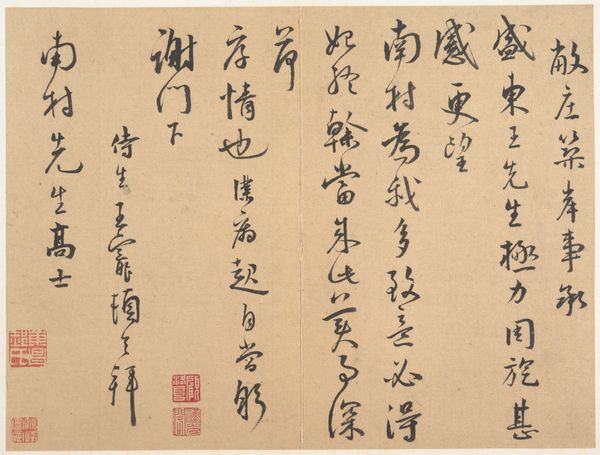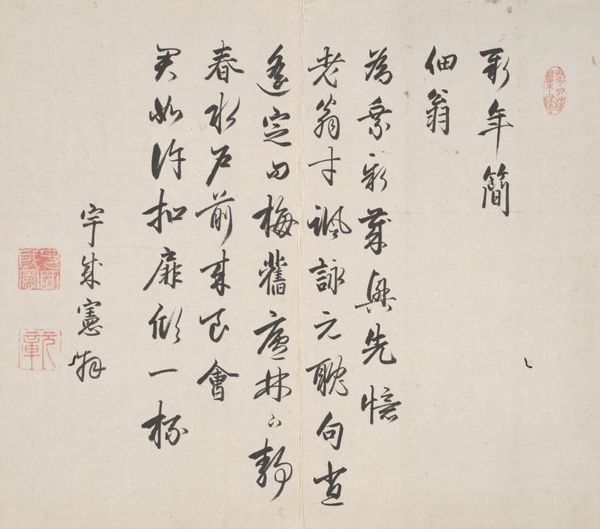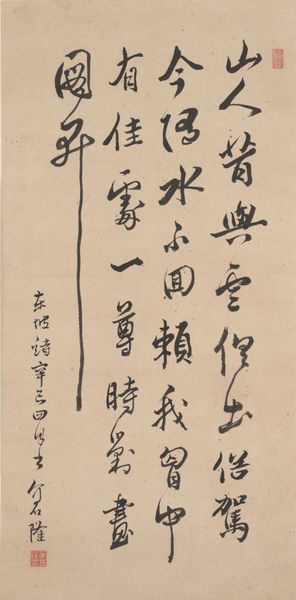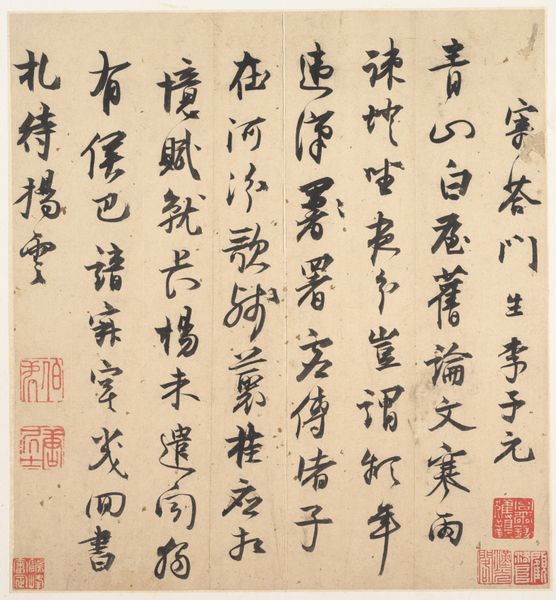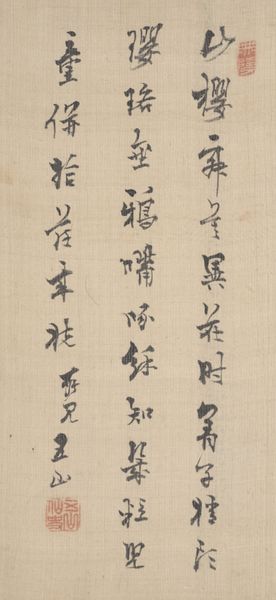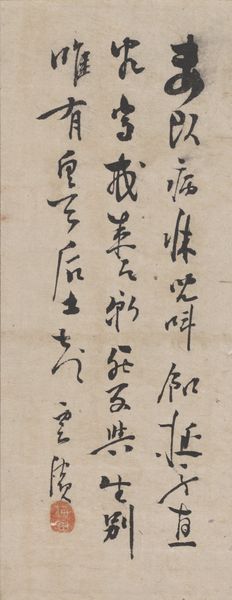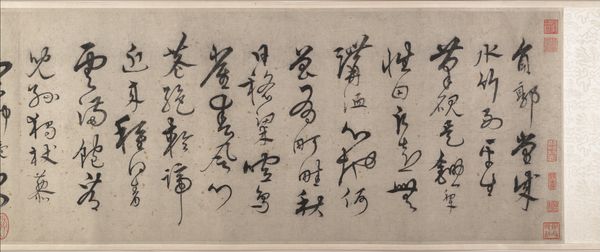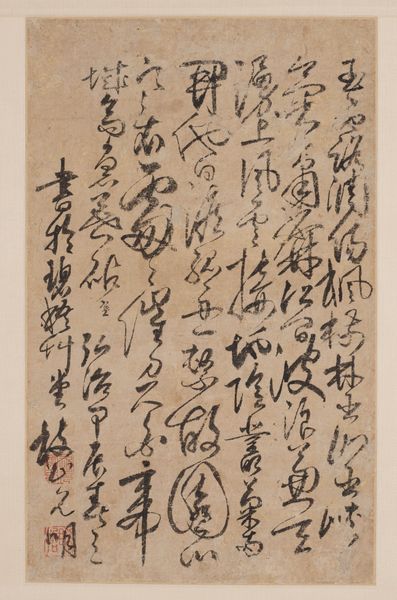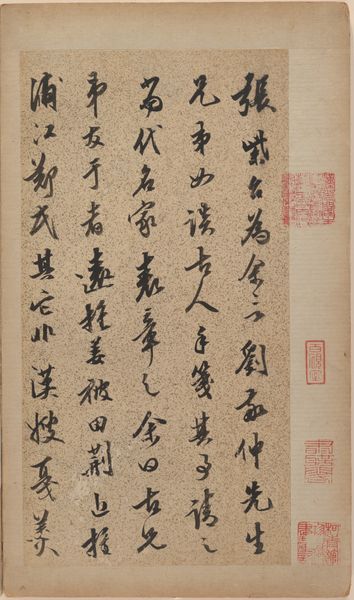
drawing, paper, ink
#
drawing
#
asian-art
#
paper
#
ink
#
calligraphic
#
calligraphy
Dimensions: Image (leaf a, right letter): 7 3/4 x 5 7/16 in. (19.7 x 13.8 cm) Image (leaf a, left letter): 7 1/4 x 4 9/16 in. (18.4 x 11.6 cm) Image (leaf b, right letter): 7 1/2 x 5 3/16 in. (19.1 x 13.2 cm) Image (leaf b, left letter): 7 x 4 9/16 in. (17.8 x 11.6 cm) Image (leaf c, right letter): 7 1/2 x 5 3/16 in. (19.1 x 13.2 cm) Image (leaf c, left letter): 7 1/4 x 4 9/16 in. (18.4 x 11.6 cm) Image (leaf d, right letter): 7 1/2 x 5 3/16 in. (19.1 x 13.2 cm) Image (leaf d, left letter): 7 1/4 x 4 9/16 in. (18.4 x 11.6 cm) Image (leaf e, right letter): 7 5/8 x 5 3/16 in. (19.4 x 13.2 cm) Image (leaf e, left letter): 7 1/4 x 4 3/4 in. (18.4 x 12.1 cm)
Copyright: Public Domain
Curator: What immediately strikes me about this work is its air of graceful spontaneity, like catching someone in mid-thought. Editor: Yes, that’s a good way to put it. What we are looking at here are “Letters to Fang Shiguan” by Bada Shanren. They date from 1688 to 1705, and it's done in ink on paper. You can find it right here at The Met. The interplay of textures, I think, amplifies its emotional presence. Curator: Exactly! The ink bleeds in places, like memories seeping through. Some strokes are bold and sure, others whisper like a hesitant confession. It's far more than just communication. Editor: The brushstrokes dance across the page. Each character holds such individual presence, contributing to the composition's vibrant energy. You have the interplay between solid forms and empty spaces, and a clear emphasis on calligraphic rhythm as a means of creating a dynamic surface. Curator: Absolutely, and that interplay – it feels intensely personal. Consider Shanren’s life, his supposed madness, and exile as a form of resistance – then each of those characters become almost charged, bearing secrets and defiance. Editor: We should note that some read the work with the assumption that a deeper semiotic game is in play, with embedded symbols meant to circumvent direct expression during a time of great repression. But do you think the more straightforward, purely aesthetic experience takes a back seat as a result? Curator: Not at all. I’d say the history enhances rather than dictates. The sheer beauty of the forms remains even if we don’t unlock every single symbolic meaning behind those characters. For some, maybe myself included, the suggestive is far more rewarding. Editor: True, sometimes the ambiguity can speak volumes. It really encapsulates the beautiful tension between constraint and creative expression that defines Bada Shanren's work. Curator: Well, it's been great discussing it with you. This really exemplifies his unique voice and what it has to offer. Editor: Yes, definitely. A fascinating glimpse into Bada Shanren’s artistry.
Comments
No comments
Be the first to comment and join the conversation on the ultimate creative platform.
